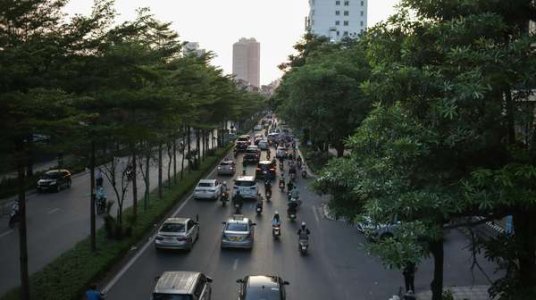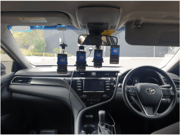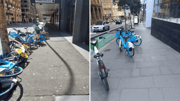Aussie Government rolls out massive road change in a few weeks. Is it time to say goodbye to your car?
By
Danielle F.
- Replies 82
As the clock ticks down to a significant shift in road rules, drivers are bracing for a massive overhaul happening soon.
This change could axe several beloved car models from showrooms.
The Australian Design Rule (ADR) has been the cornerstone of vehicle regulation in the country.
It sets the bar for vehicle safety, efficiency, and environmental impact.
These non-negotiable rules ensure that every car, truck, or motorcycle sold or driven in Australia meets stringent standards.
An impending change called the ADR 98/100 should take effect starting 1 March to make way for better vehicle safety.
Part of ADR 98/100's mandate stated that all new vehicles, regardless of launch date and time, must be equipped with autonomous emergency braking (AEB).
AEB technology detects potential collisions and automatically applies brakes, potentially preventing crashes or reducing severity.
This move towards enhanced safety has been in the pipeline since 2021, which gave the automotive industry ample time to adapt.
James Williams, Head of Policy at the Royal Automotive Club of Victoria (RACV), spoke about the benefits of AEB.
Mr Williams cited data from the Monash University Accident Research Centre and Europe's New Car Assessment Program (NCAP) that demonstrated AEB's effectiveness in reducing collision severity.
The RACV firmly stood by the legislation, as it prioritised vehicle safety and the potential to reduce road trauma over dealership profits.
In light of the looming change, some vehicle models will make the ADR98/100's cut.
Hussein Dia, a specialist from Swinburne University, spoke about the implications of the new rule.
'Car dealers would need to invest in bringing their existing models up to the required standard for Australia,' Dia stated.
'If they can't update the vehicles, or they choose not to update them because it is costly, then these models would need to be retired altogether.'
Several vehicle companies in Australia have already prepared for the looming change.
For example, Suzuki retired its Ignis light SUV and introduced the Suzuki Fronx, a new vehicle complete with AEB.
This shift should align Australia with international safety standards similar to European countries.
The ADR 98/100 may seem beneficial to the public, but it could have several drawbacks.
The introduction of AEB across all vehicles could drive car prices up, as manufacturers need to recoup the costs of integrating this new technology.
Vehicles from various carmakers could also discontinue extensive models.
According to the Australasian Fleet Management Association (AfMA), models such as the Fiat 500 and Abarth models, select LDV G10 and V80 vans, and Mahindra Pik-Up variants will be phased out soon due to non-compliance.
Mainstream models are not immune to the phase-out either.
The Mitsubishi ASX, Eclipse Cross, Pajero Sport, and older Renault Kangoo and Trafic models will also be affected.
Other than the Ignis, Suzuki will also pull out the Baleno and S-Cross units from sale.
Luxury cars are not spared from the culling.
Models like the Aston Martin DB11 and DBS, Lamborghini Aventador and Huracan, and some Porsche 718 versions should be phased out from the Australian market as well.
As Australia moves forward with this legislation, it has made it clear that it is prioritising saving lives and creating safer roads for everyone.
It's essential to stay informed about how the ADR 98/100 might affect you and your vehicle.
Consult with your manufacturer if your vehicle is good to go or if it's on the chopping block/
Make sure that your vehicle meets the new standards and can offer you and your loved ones safety on the road.

What do you think about the changes ADR 98/100 could bring? Share your thoughts about this new road change in the comments section below.
This change could axe several beloved car models from showrooms.
It sets the bar for vehicle safety, efficiency, and environmental impact.
These non-negotiable rules ensure that every car, truck, or motorcycle sold or driven in Australia meets stringent standards.
An impending change called the ADR 98/100 should take effect starting 1 March to make way for better vehicle safety.
Part of ADR 98/100's mandate stated that all new vehicles, regardless of launch date and time, must be equipped with autonomous emergency braking (AEB).
AEB technology detects potential collisions and automatically applies brakes, potentially preventing crashes or reducing severity.
This move towards enhanced safety has been in the pipeline since 2021, which gave the automotive industry ample time to adapt.
James Williams, Head of Policy at the Royal Automotive Club of Victoria (RACV), spoke about the benefits of AEB.
Mr Williams cited data from the Monash University Accident Research Centre and Europe's New Car Assessment Program (NCAP) that demonstrated AEB's effectiveness in reducing collision severity.
The RACV firmly stood by the legislation, as it prioritised vehicle safety and the potential to reduce road trauma over dealership profits.
In light of the looming change, some vehicle models will make the ADR98/100's cut.
Hussein Dia, a specialist from Swinburne University, spoke about the implications of the new rule.
'Car dealers would need to invest in bringing their existing models up to the required standard for Australia,' Dia stated.
'If they can't update the vehicles, or they choose not to update them because it is costly, then these models would need to be retired altogether.'
Several vehicle companies in Australia have already prepared for the looming change.
For example, Suzuki retired its Ignis light SUV and introduced the Suzuki Fronx, a new vehicle complete with AEB.
This shift should align Australia with international safety standards similar to European countries.
The ADR 98/100 may seem beneficial to the public, but it could have several drawbacks.
The introduction of AEB across all vehicles could drive car prices up, as manufacturers need to recoup the costs of integrating this new technology.
Vehicles from various carmakers could also discontinue extensive models.
According to the Australasian Fleet Management Association (AfMA), models such as the Fiat 500 and Abarth models, select LDV G10 and V80 vans, and Mahindra Pik-Up variants will be phased out soon due to non-compliance.
Mainstream models are not immune to the phase-out either.
The Mitsubishi ASX, Eclipse Cross, Pajero Sport, and older Renault Kangoo and Trafic models will also be affected.
Other than the Ignis, Suzuki will also pull out the Baleno and S-Cross units from sale.
Luxury cars are not spared from the culling.
Models like the Aston Martin DB11 and DBS, Lamborghini Aventador and Huracan, and some Porsche 718 versions should be phased out from the Australian market as well.
As Australia moves forward with this legislation, it has made it clear that it is prioritising saving lives and creating safer roads for everyone.
It's essential to stay informed about how the ADR 98/100 might affect you and your vehicle.
Consult with your manufacturer if your vehicle is good to go or if it's on the chopping block/
Make sure that your vehicle meets the new standards and can offer you and your loved ones safety on the road.
Key Takeaways
- Starting 1 March, the Australian Government should be pushing out the changes requiring new vehicles to have autonomous emergency braking (AEB).
- The Australian Design Rule (ADR) 98/100 could affect several popular vehicle models, which will be retired from catalogues due to non-compliance.
- The new rule aimed to improve road safety by reducing the number of rear-end collisions and should align Australian vehicle standards with Europe.
- While this change could lead to the discontinuation of some vehicle models, it may also result in higher prices due to building costs.








